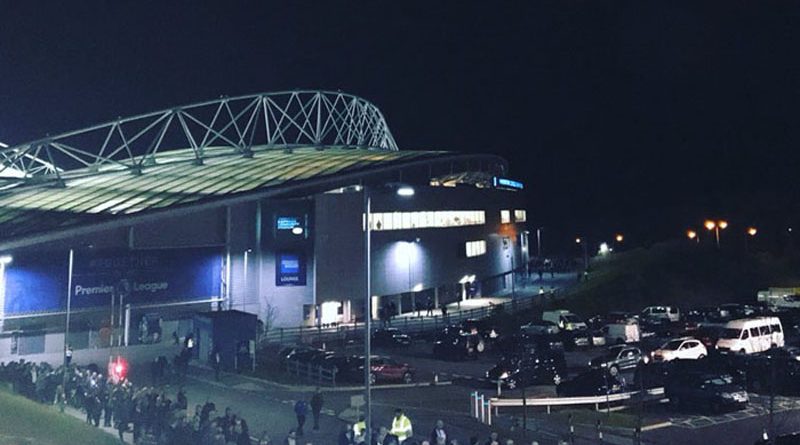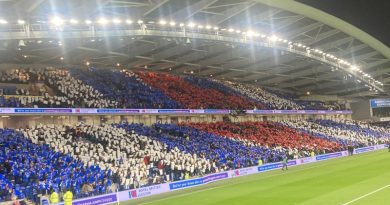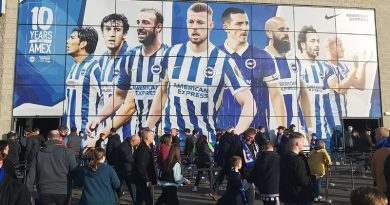How Brighton and Hove Albion became the team it is today
Brighton and Hove Albion have been enjoying their time in the topflight of the Premier League for nearly five years now.
This historic run of success has seen them play against Arsenal, Chelsea, Tottenham Hotspur, and other footballing giants; however, it took a long time for the club to reach these stages.
Any team that enters the biggest league in England is bound to induct a slew of new followers, and that is exactly what is happening with Brighton and Hove Albion right now.
But how much do you know about this team? This article will explore the history of your favourite club to give you an idea of the struggles and triumphs of Brighton and Hove Albion.
Founding
Like many modern football clubs, the story of Brighton and Hove Albion starts in the early 1900s. In 1901, the club played in what was known as the Southern League under the name of Brighton and Hove United.
This name didn’t last long, and the name of the club was quickly changed to Brighton and Hove Albion to remove the confusion between another team that had recently been disbanded, Brighton and Hove Rangers.
The team enjoyed more success than most in this league, winning both the title of champions and the charity shield in the 1909/10 season.
The team even moved to a bigger ground in this period, transferring from their local cricket club to the Goldstone Ground. The team continued to play here until 1997.
The Football League
Brighton and Hove Albion were able to capitalise on their success in the Southern League by officially joining the new English Football League in 1920.
This league existed long before the Premier League that we know today, and there were three divisions. Brighton and Albion naturally began their major league career in the third division, finishing in 16th place in their debut season.
First promotion
Things were relatively calm for Brighton and Hove Albion for the next few decades. They were a regular among the third division and rarely saw any cup successes.
All that changed in the 1957/58 season; however, when the team was finally promoted to the second division under the management of Billy Lane.
Unfortunately, the club’s run of success was short-lived as the club was relegated back to the third division the next season.
Brighton and Hove Albion continued their streak of bad luck by being demoted further into the fourth division in the early 1960s.
Second Chance
The next ten years were, again, fairly uneventful for the team. Brighton and Hove Albion were able to claw their way back up to the third division in no time, but the real change didn’t manifest until the 1970s.
Chairman Mike Bamber seemed to understand what the club needed to become successful, and this knowledge inspired him to bring Brian Clough into the fold in 1973.
Under his keen management, Brighton and Hove Albion climbed back to the second division where they stayed until 1979. It wasn’t demotion that took them out of this league; however.
First Division and the FA Cup
In the 1978/79 season, Brighton and Hove Albion were elevated to the first division under Mike Bailey. During this time, the first division was the top league in the country.
That meant that Brighton and Hove Albion were able to show their metal against giants, and the team stuck it out for quite some time. Unfortunately, Mike Bailey left the club before the ’82 season.
While Jimmy Melia was swiftly brought in as a replacement, he couldn’t emulate his predecessor’s success. Brighton and Hove finished bottom of the league in 1983 and were relegated back into the second division.
However, it wasn’t all bad news this season. The team was able to find victory in the FA Cup, winning a spot in the final against Manchester United.
The team brought the first round to a 2-2 draw but promptly lost the second leg 4-0 and sacrificed their chance at the much-coveted trophy.
Moving grounds
It seemed that Brighton and Hove Albion’s days in the sun were long over after the 1983 cup final. The club spent the next four years falling back into the third division, but this was the least of their worries.
Brighton and Hove Albion had lost a lot of financial support during their time plummeting down the league rankings, and it looked as if the club would have to be placed in liquidation if things were not rectified soon.
A solution was found when the owners at the time decided to sell off the Goldstone Ground that the club had called home for nearly seventy years.
The team moved to Priestfield Stadium, which was a gruelling seventy miles away from their initial ground. While this move was largely viewed as blasphemy at the time, it did save the club from financial ruin, and better days were ahead.
Back on top
It was a rough four years for Brighton and Hove Albion, but things soon began to look up for the team in 2001. They were once again promoted to the second division and gained another promotion the following year. However, you probably know what comes next.
With two successive promotions under their belt, the team was rising fast. The financial worries dissipated, and Brighton and Hove were moved to Falmer Stadium in 2011.
This move proved fruitful, as the club found itself in the playoffs several times before finally reaching the top echelon in 2017.
This is where Brighton and Hove Albion have remained ever since, and it seemed that every online casino failed to predict this success.
In fact, you can bet on your favourite teams or hone your betting skills at a few online casinos in the UK. Just head to Online Casinos for a full list of websites to visit.
You won’t want to doubt Brighton and Hove Albion again, that’s for sure.
Conclusion
Brighton and Hove Albion have not had an easy journey, but it has had an interesting one. It seems that no team in the premiership deserves their position as much as this scrappy team of underdogs, so let’s hope that Brighton and Hove Albion are here to stay this time.




